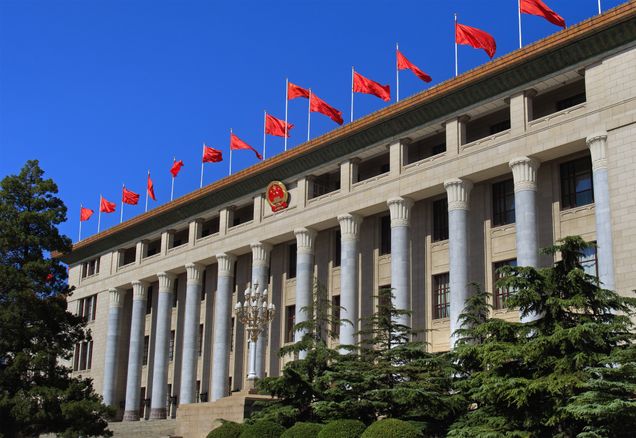Experts React: China’s National Development and Reform Commission Issues New Guidance on Greening the BRI

On Monday, March 28, 2022, China’s National Development and Reform Commission issued new guidelines on greening the Belt and Road Initiative (BRI), the ambitious multi-billion-dollar international push to better connect China to the rest of the world through trade and infrastructure. Through this venture, China is providing over 100 countries with funding they have long sought for roads, railways, power plants, ports and other infrastructure projects.
The guidelines say the Chinese government will actively play a leading role to improve policy support for green development, build a green exchange and cooperation platform and establish an environmental risk prevention and control system. By 2030, China commit to significantly enhancing green development capabilities of overseas enterprises and improving the environmental risk prevention and control system for overseas projects. Following Chinese leader Xi Jinping’s September 2021 announcement, the guidelines commit China to stop building new overseas coal power projects; for existing coal power plant projects, the guidelines encourage the clean and efficient use of coal, as well as upgrading energy conservation and environmental protection facilities through the use of advanced technologies such as carbon dioxide capture, utilization and storage. The guidelines are the first joint statement from the Chinese Ministries of Foreign Affairs, Ecology and Environment and Commerce on greening the BRI.
Below, our experts share their reactions to the landmark announcement:
“China’s new directive is the first of its kind—a large emitter with a major global carbon footprint committing to enable low-carbon transitions overseas. For China, what makes this so significant is the fact that it comes from the highest levels and is mainstreamed across all the leading Chinese agencies engaged in overseas economic activity from finance to the environment. What is more, the policy encourages cooperation not only with partners in the Global South, but also offers to cooperate with the West—showing that China is willing to cooperate on the provision of global public goods with the West even though China and the West have an increasing set of legitimate grievances with each other on other matters. There are some areas where the policy does not yet go far enough, but it sets the bar for other large emitters who have a responsibility to ensure that their overseas economic activity is aligned with climate and development goals. The ‘Build Back Better World’ and ‘Global Gateway’ in the West should match these efforts at minimum.”
“This guidance represents the first real clarity regarding policy implementation of Chinese leader Xi Jinping’s 2021 statement that China would not build new coal plants overseas. Planned coal plants are unlikely to go forward, while plants under construction are likely to proceed, which could add nearly 50GW of new overseas coal capacity and up to 300 million tons of annual CO2 emissions. However, the guidance also highlights China’s desire to cooperate on renewable energy development overseas and to help China’s domestic renewable energy companies go global, both of which are big steps forward for shifting to a green and low-carbon BRI.”
“This guidance marks an important step forward in prioritizing the environmental concerns of local communities, not just national governments. Communities around the world have long sought protections to ensure that they share in the economic benefits – and are protected from the environmental costs – of international investments, but very few safeguards exist to steer global commercial investment in this direction. As a result, projects may exacerbate existing conflicts and face delays or even cancellations. This guidance recognizes the serious environmental, social and economic risks that can arise from ignoring those concerns. China’s Ministry of Ecology and Environment has developed tools for investors to consider their impacts on local ecosystems, and this guidance will steer investors toward those tools to ensure Chinese overseas investment is truly win-win.”
“As Chinese development finance volumes currently stand at historic lows, this guidance encourages Chinese policy banks and other sources of financing from commercial banks and Chinese companies, to direct lending toward green financing. Should development finance volumes rebound, we may see financing directed to more green sectors and an increase in green financing coming from sources beyond development finance. Global South countries who are seeking to undergo transitions from fossil fuel dependency to renewable energy for their domestic development will welcome these new developments from not just China’s policy banks, but financing sources beyond development finance.”
Dig deeper:
- Risks to Global Biodiversity and Indigenous Lands from China’s Overseas Development Finance
- Up in the Air: Potential Implications of Xi Jinping’s Green Energy and No-Overseas-Coal Announcement
- Plant Conversions and Abatement Technologies Cannot Prevent Stranding of Power Plant Assets in 2°C Scenarios
- Green BRI and the 2030 Agenda for Sustainable Development – Enhancing Environmental Management System and Policy Studies for BRI Projects
- Testimony Before the US-China Economic and Security Review Commission: China’s Energy Plans and Practices
*
Never miss an update: Subscribe to updates from the Global China Initiative.



